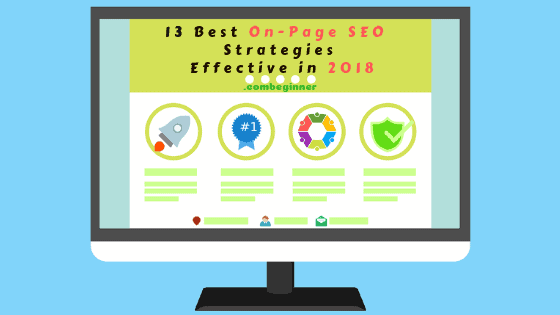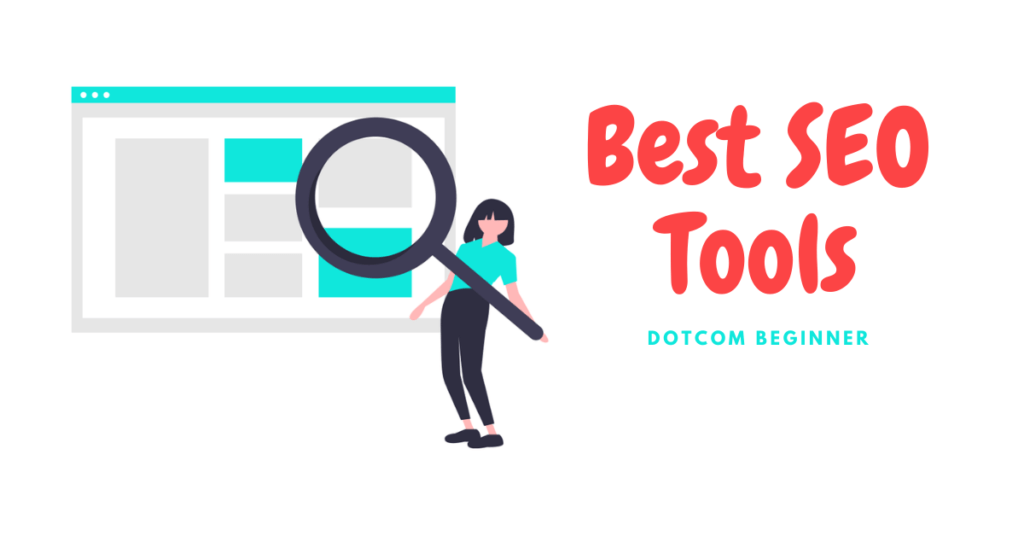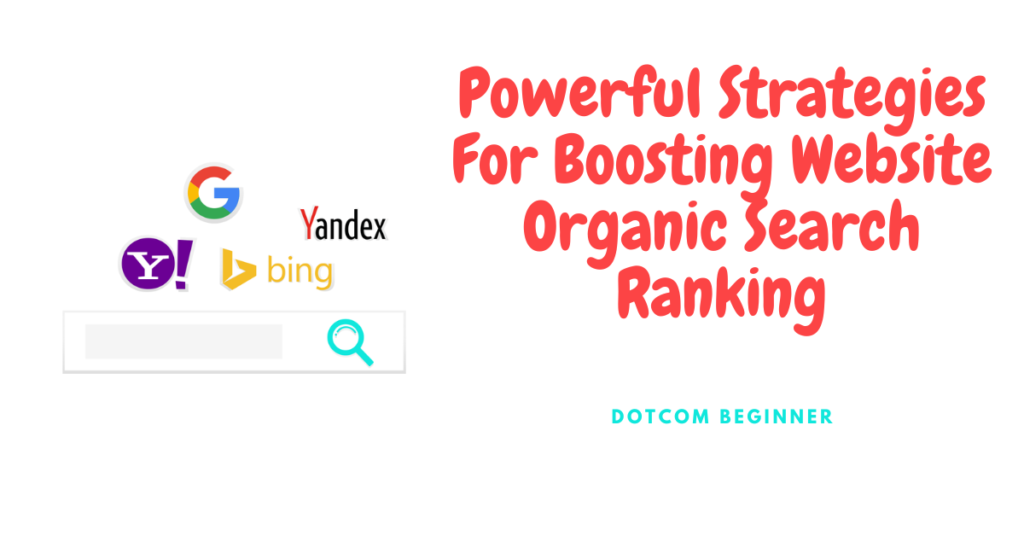Last Updated on November 24, 2018
Everybody loves Speed, so why would someone wait for your slow loading website?
No matter how good your website is if the PageSpeed is slow and sluggish you will struggle to find an audience for your website.
Page Load Speed is the very first thing that a visitor will notice and especially when it is slow.
World’s largest e-commerce site, Amazon, revealed in their study about page speed that with every second delay their site loads, Amazon loses 1% of revenue.
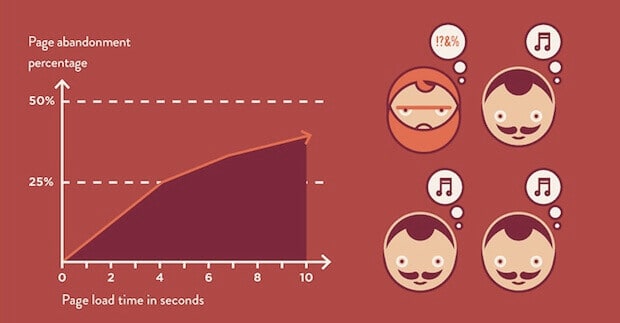
We, humans, are really impatient and want everything as soon as possible or else we lose interest in it.
And let me tell you how fast we lose interest in any content, “Within first 3 Seconds“.
Whether you are uploading a video or a written content, first 3 seconds are crucial in deciding if a viewer will continue to explore your content or stumble upon to the next site.
53% of the mobile site visitors leave a page if it takes more than 3s to load and the number increases to 74% if it takes longer than 5s to load. Click To TweetPeople when browsing on the internet wants the result to their queries as soon as they hit enter. Now whether if its a search query, a bill payment, a purchase on an e-commerce site or a media consumption, if your site doesn’t deliver what it meant to, as soon as people click through it, they will abandon your site.
This comes by no surprise that today more than half of the internet traffic comes from mobile devices. This is why search engines are shifting their focus on the mobile page speed and search index.
According to Google’s recent study, an average site took between 7 and 11 seconds to load, which is way more than their benchmarked site speed of 3 seconds or less.
Less the time your website page takes to load less will be the bounce rate of your site.
Siting to Google’s another recent mobile page speed research, it states when your page load time goes from 1s to 3s the bounce rate increases 32%. The bounce increases to 90% if the page load speed goes from 1s to 5s. And the bounce rate soars up to 123% if your website is taking more than 10s to load fully. This is how important page speed is for your website.
The research also states that the average time to fully load a mobile landing page has dropped by seven seconds but it still takes 15 seconds that is a long wait for sure.
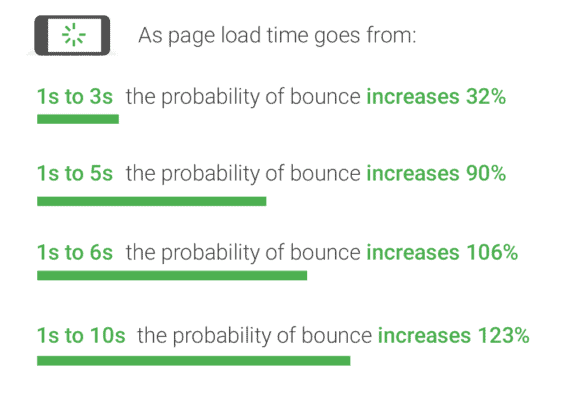
What is PageSpeed?
PageSpeed is the measurement of the time it takes to fully load and display the entire content of the web page on a web browser window. It is a web performance metric designed to track how fast a page responds in loading the content to the request and shows the desired result.
The amount of time your page visitor has to wait before starting to interact with the website can also be defined as the page speed. It is also sometimes referred to as Page Load Time.
If you go by the technical definition, PageSpeed is the ‘Time to First Byte‘ i.e. the time taken by a browser to receive the first byte of information from the Web Server.

PageSpeed is often confused with ‘Site Speed’ which is the page speed for a sample of page views on a site.
Why should you care about Page Speed?
Fast loading pages result in high user engagement, increased conversions, more traffic, and better user experience. A page that takes forever to load frustrates the visitors and force them to leave the site.
Let me give you an example of the world’s most used search engine, Google to illustrate the importance of PageSpeed.
We just don’t search something, we “Google” it. Their brand name has become a verb.
The reason behind having such a huge brand image and loyalty is the speed at which Google provides results for over 3.5 billion searches per day and 1.2 trillion searches per year worldwide.
The company says, by slowing down its search results by just four-tenths of a second they could lose 8 million searches per day which means they will serve many million less online adverts. And that is a huge loss.
Your company or blog might not be that huge but the impact will be significant.
Search Engine Optimization. A snappier website will not only improve conversions and brand image but is also good for SEO.
Don’t forget to add page speed to your On-Page SEO Strategy as it will give you great results in the long run.
A site that loads fast is given a preference over the one that is laggy. Though the user intent, query, and relevance of the page are still more important.
Google has been emphasizing the importance of a good page speed from a long time now. And to encourage the webmasters and website owners, search engines have included site speed as one of the many ranking factors.
Therefore a fast website can attract a ton of traffic and in-turn increase conversions.
Clearly, speed is important to your business, your customers, and to Google.
User Experience. 73% of mobile internet users say that they’ve encountered a website that was too slow to load and 38% say that they’ve encountered a website that wasn’t available.
Today every successful business focus on user experience and satisfaction. And that is one of the reasons for their success.
A website with fast load time will leave a positive impact on the visitor, whether it’s a first time visitor or a returning one.
User experience is the key to any business no matter if it’s online or offline. A user is most likely to return if the first time user experience was great.
47% of consumers expect a web page to load in 2s or less. Click To TweetAccording to an article, 79 per cent of shoppers who are dissatisfied with site performance say they’re less likely to purchase from the same site again and 52% of online shoppers identify quick page loads as important to their loyalty to a site.
Conversions. Fast pages are more efficient and convert better.
Whether you’re running a huge enterprise or an SME, if you’re are not able to convert the visitors into paying customers, you’re losing on a large chunk of money.
Running an online business is not just about getting a lot of traffic on the site but to attract quality traffic and convert it into customers.
A 1s delay in page response can result in a 7%reduction in conversions.
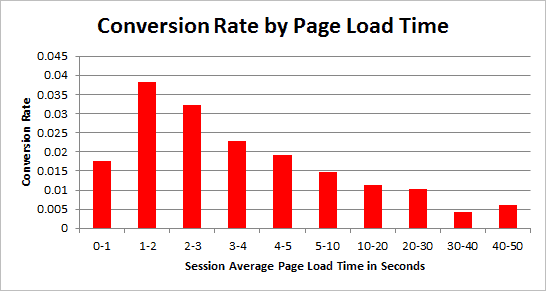
If your web page is taking too long to load you leave a lot of money on the table. Meaning, if the visitor bounces off from your website without even doing the initial interaction then how are you suppose to offer what you have to offer.
Pages with a longer load time tend to have higher bounce rates and lower average time on page.
Interestingly, WalMart showed a 2% increase in conversions for every 1 second of improvement to their page speed.
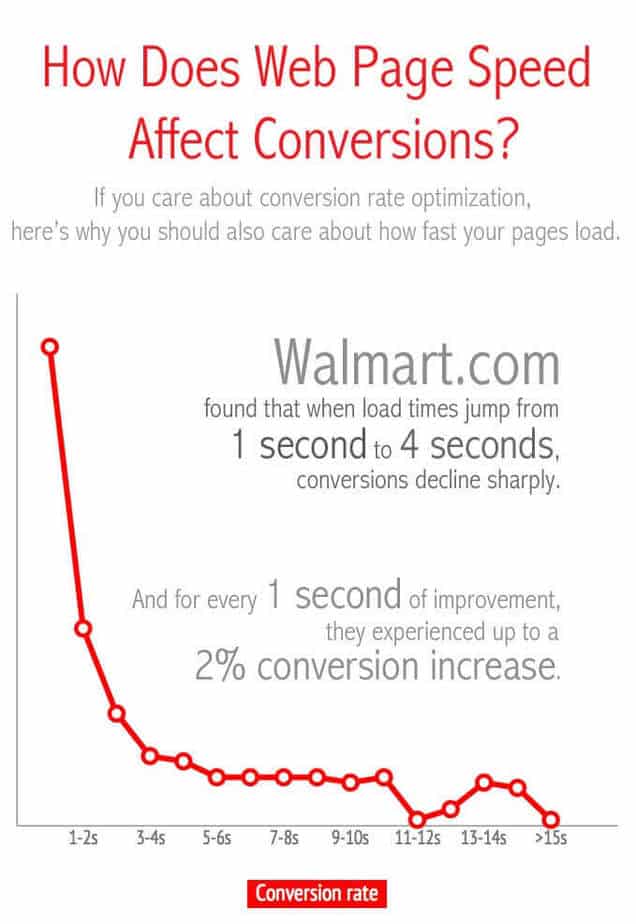
E-commerce. This is the most vulnerable industry to PageSpeed. Everything matters on how fast the website responds to the user’s request from adding a product in the cart to hassle free and secure checkout.
On an average, an e-commerce website page takes around 7s to load. Click To TweetIt doesn’t matter if you are offering some great deals and jaw-dropping discounts on your e-commerce website if your site is taking ages to load.
If the visitor finds any kind of friction in the whole process he/she is most likely to abandon the shopping cart resulting in fewer sales.
Let me throw some useful facts here.
Around 80% of shoppers say that they will avoid using a website again if it takes too long to load during their first visit. Click To TweetAlso, Amazon reported, for every 100 milliseconds of improvement to their site speed their revenue increased by 1%.
A Kissmetrics study posited that, for an e-commerce site making $100,000 a day, a 1-second delay in page speed can result in $2.5 million lost annually!
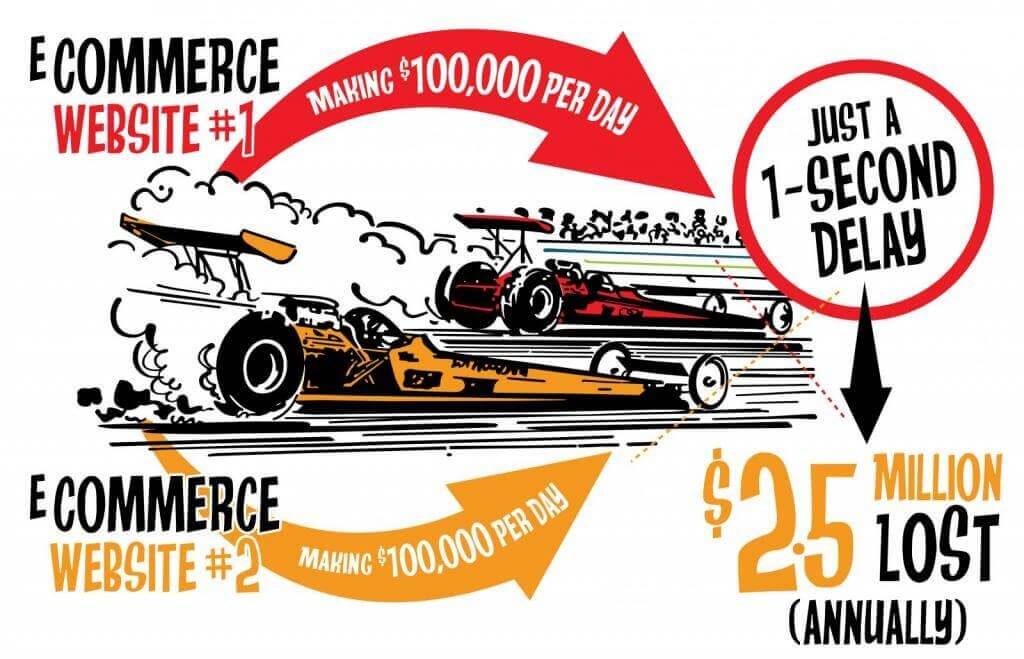
Crawl Budgets. Google or for say any search engine sets aside or allocates a certain amount of time for each website to be crawled and indexed.
This means every site gets a small piece of the big crawl budget slice that needs to be used judiciously in order to get the site analyzed and receive a spot in the search ranking index.
If your site pages take long to load you will burn out most of the crawl budget in loading slow pages, that was assigned to assess your website.
If your site is taking too long to load, “Google’s crawlers could abandon the effort and exit before indexing completes.
The valuable budget which could have been used to crawl the entire site will be restricted to crawl only a few pages.
This can make a huge difference when search engine spiders come on your site and have to return without indexing every element on the site due to limited crawl budget.
I found this great infographic on How Loading Time Affects Your Bottom Line.
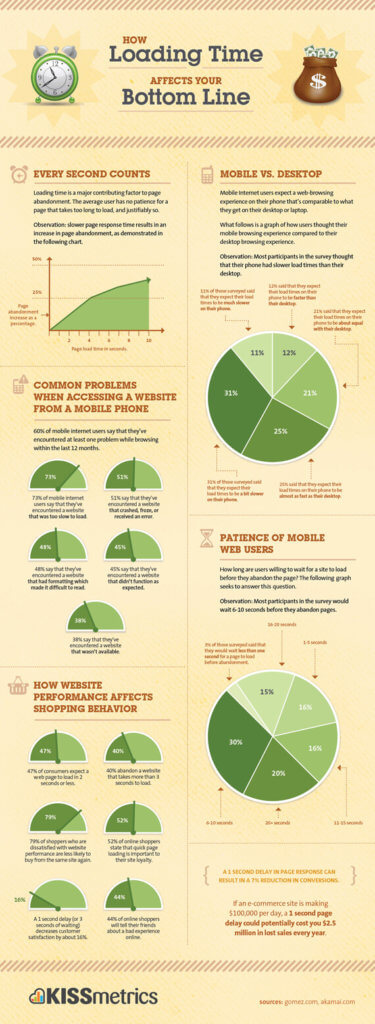
Is PageSpeed a Ranking Factor?
Yes, PageSpeed is one of the ranking factors in the search engines algorithm for both desktop and mobile searches.
Google used to consider page speed more of an indicator than a ranking factor in the initial years but eventually found out through its studies over the years that page speed is a crucial metric in shaping the user experience on a site and affecting the search behaviour of a user.
This is the reason search engines are stressing on improving the page speed of websites.
Google has been pushing the importance of page speed back since 2010 when the company first announced in an official blog post that they are including site speed in their ranking algorithms and will be one of the many ranking factors for desktop searches.
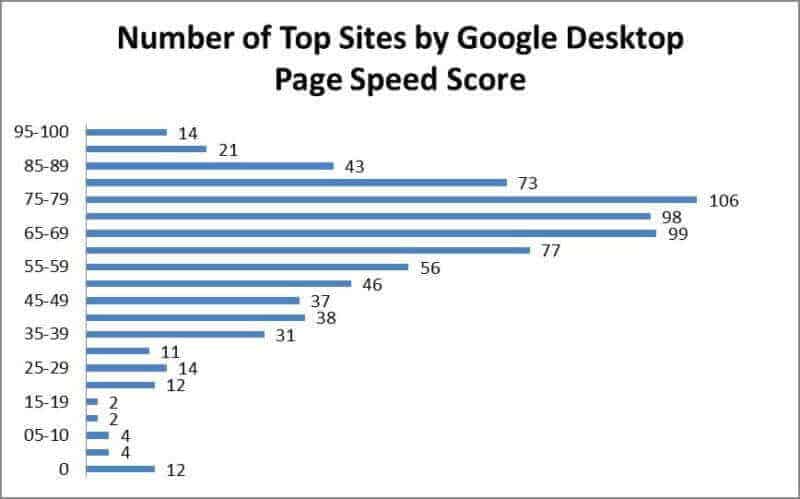
With time as search engines realized that more than 58% of searches worldwide are happening on mobile devices there focus is now shifted on mobile search.
Mobile search is the new web priority for every search engine now and delivering premium mobile user experience is a must.
Google has come with numerous updates and projects for improving the mobile search algorithm in recent times and one such project was the Accelerated Mobile Pages (AMP) which was started a couple of years back and has been popular among the webmasters since.
Now Google has recently announced that they are rolling out Mobile-first Index update for all the websites on the internet which will be effective from July 2018.
Also known as the Google Speed Update, confirms that Page speed will become a ranking factor in mobile search
Which means now Google will be prioritizing the mobile versions of content for crawling, indexing and ranking over the desktop versions.
Google says, Mobile-first indexing means that we’ll use the mobile version of the page for indexing and ranking, to better help our – primarily mobile – users find what they’re looking for.
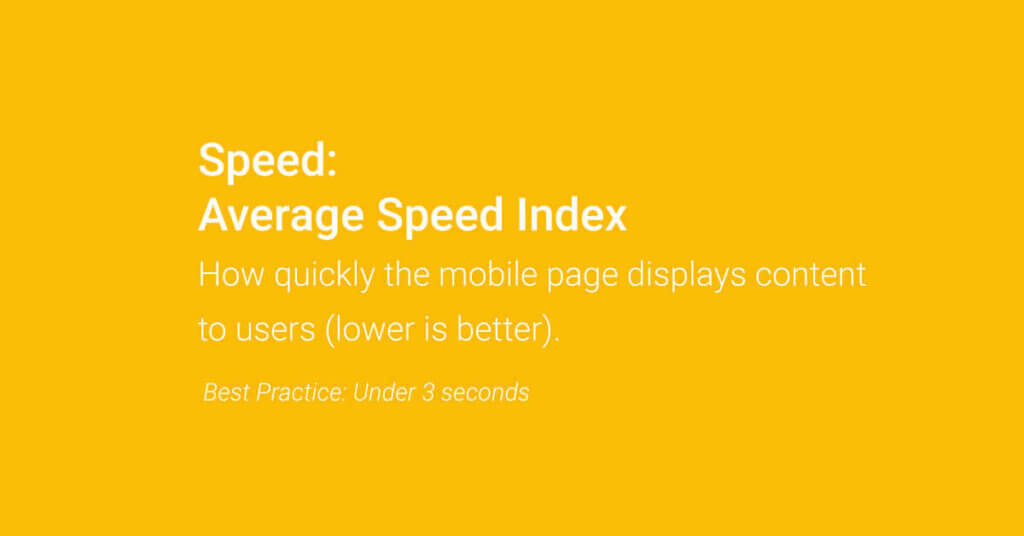
So if your website is not optimized for mobile searches or provides a bad user experience, your website traffic will take a hit.
Does Google penalize slow sites?
Yes, most of the times.
Google says: A search result for a resource having a short load time relative to resources having longer load times can be promoted in a presentation order, and search results for the resources having longer load times can be demoted. Click To TweetAlthough the search intent, user query, and content/page relevancy still are more important.
What is a good PageSpeed Score?
Although there is no general rule for benchmarking the perfect page speed as different tools to analyze and summarize data with different parameters.
But if we talk about one of the most used PageSpeed analyzer tools, Google’s PageSpeed Insights, your website is given a score between 0-100 and ranked with the following scales; 90-100 (fast), 50-89 (average), and 0-49 (Slow).
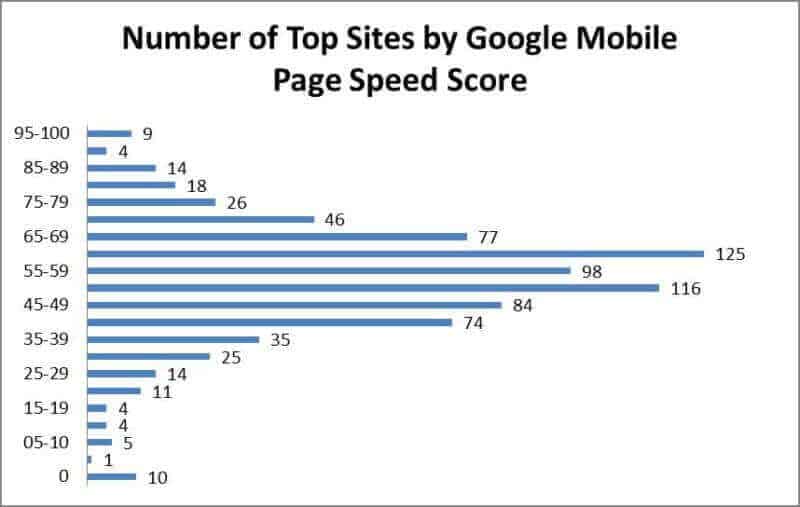
How Long Should it take a Website to Load?
According to the average industry standard, an ideal load time for a fast website is 3 seconds or less and is considered excellent. While 5 seconds or less is considered good, 8 seconds or less is Fair whereas 9 seconds or above is rated as Poor.
To back up this claim, a study shows 53% of the mobile site visitors leave a website if it takes more than 3s to load and the number skyrockets to 74% if it takes longer than 5s to load.
How to check PageSpeed?
While its best to run the speed test for your site on as many devices as possible to get a better idea of how your site responds on different device types, OS and Screen Resolution and can give a real-world feel for your site.
But it’s best to have data in hand that can be measured and tracked in order to best optimize your website for users. As something that can be measured can be improved.
For this, you can use some useful and popular tools like Google PageSpeed Insights, Pingdom, GTmetrix, YSlow, OnCrawl, Searchmetrics, Web Page Analyzer, and WebPageTest.
Using these tools you will get detailed data and insights about your website load speed on desktop and mobile as well.
You will get actionable data using which you can improve the site speed. These tools will not only give your site results but will also share with you tips and guidance on how can you optimize your website and rank well in search engines.
What can lower your PageSpeed?
There are myriad factors that can affect the load speed of your website. Also, it can be both, On-Page as well as Off-Page.
The thing to consider here is that all these problems can be improved or removed permanently and does not require a whole set of technical expertise to do it.
1. Web Hosting
A cheap web hosting might look lucrative and intriguing right now but will hurt your page speed and rankings in the long run. So always go for a trusted and reliable web hosting. I am hosting Dotcom Beginner on Bluehost and have no complaints with them.
2. Large Images
Avoid using large and bulky images on your website. It adds on to the page loading time and slows it down. It is advisable to compress the images before uploading them. You can use tools like TinyPNG or WPSmush to compress heavy files.
Fact: As the number of elements—images, videos, text, titles—on a page goes from 400 to 6,000, the probability of conversion drops 95%.
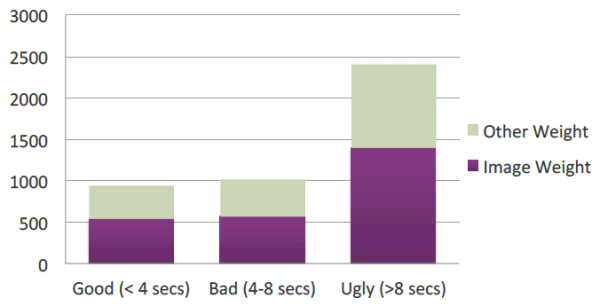
3. Embedded Media
This includes both videos and images. Media files surely add to your site’s design and interaction but also lowers the site load speed.
Whenever possible host media on your own server.
4. Numerous Redirects
301 & 302 redirects may come in handy at times when migrating a site to a new domain, URL, or CMS but don’t overdo it.
Because when you redirect a page URL you are basically adding one more command for the web browser to execute which in turn will affect the page load time.
Keep the redirects minimum and use only when important.
5. Complex Code
Whether you’re designing and coding the site yourself or outsourcing it to a web developer keep the design code simple, clean and sorted. Don’t add extra unnecessary blocks of code to add a feature that you’re never gonna use.
Keep the design elements, CSS and js-scrips in check. Avoid using double-barrelled code.
Your website code is the basic structure on which your site will function so try and keep it updated and clutter free.
6. Website Theme
It is not necessary that the most beautiful, impressive, and design rich theme will be the fastest and most optimized. In fact its the oppositive most of the times.
Choose a theme that does the task quite well and does not make the site sloppy. There is no use of installing a heavy theme that takes forever to load.
One of the best theme framework that is super fast, responsive and SEO optimized is the Genesis Framework by StudioPress. Its light, snappy and user-friendly and which I use for Dotcom Beginner.
7. Widgets and Plugins
Most of the times we keep on adding the widgets and plugins that we later realize did not even used once.
But they take up space on your website and web server resulting in a decrease in the page speed.
Interestingly, even one single wrong plugin can bring down your page speed drastically. So choose your plugins carefully.
Pro Tip: Always make sure you use a plugin that is developed by a credible source and is updated regularly.
8. Advertisements
Too many ads or unoptimized ads will adversely affect the page loading time.
Ads are a great source of revenue for many sites but placing too many of them will affect the speed of the site.
Myriad advertisements not only bothers and frustrates your visitors but can also hurt some areas of SEO.
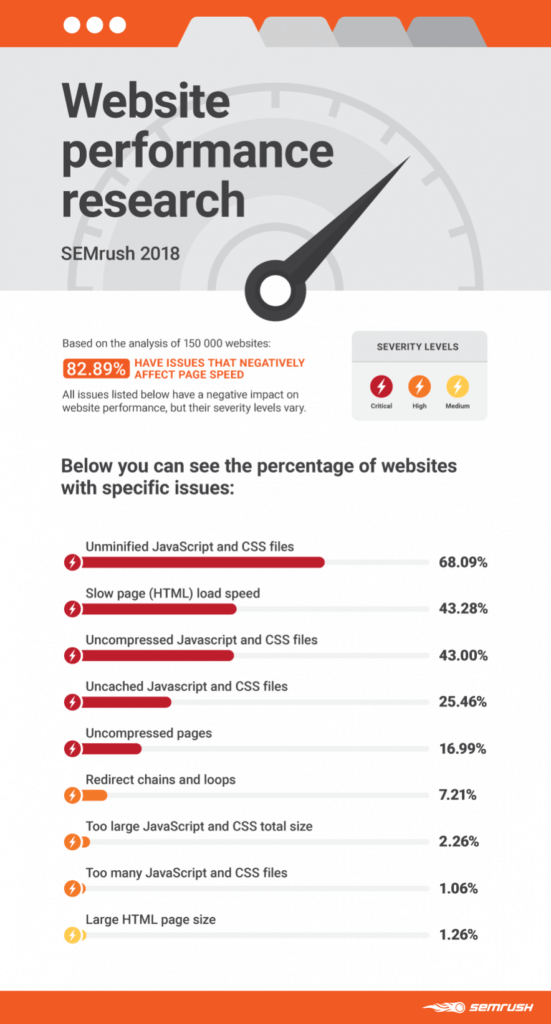
Conclusion
If I were you, I would have never taken the page speed of my website for granted a day more after reading this post.
Optimizing the page speed is an ever going task and cannot be concluded by doing some changes here and there.
It’s not a one-time affair or something that can be looked upon in a year or so. You’ll lose the game.
The reason behind is the ever-changing technology and search engine algorithms. Hundreds of updates are shooted every single day to improve the user experience and security of the visitors.
To match with this dynamic web environment and deliver an excellent experience to the visitors is what a webmaster should focus on.
A feature that looks futuristic and useful today might become obsolete within 6 months. Same goes for the optimizations that you do today on your site.
Keep your site and yourself updated on all the recent changes and updates going around the web in order to stay ahead of your competition.
Therefore maintaining a good a PageSpeed is crucial for a site and brand success.
I hope this post helped you in understanding Why PageSpeed is important for your website, What is PageSpeed and how to measure it, Is PageSpeed a ranking factor and does Google Penalize Slow Sites, What can lower your PageSpeed, and What is a good PageSpeed score.
So its a wrap then. Will see you in the next post.
If you find the article helpful and useful, share it with your friends and family or anyone who needs it the most.
And if you have any suggestions, questions or thoughts on the same, please leave a comment below and I will reply to all of them.
You can also subscribe to our blog to get all the future post delivered directly to your inbox.
